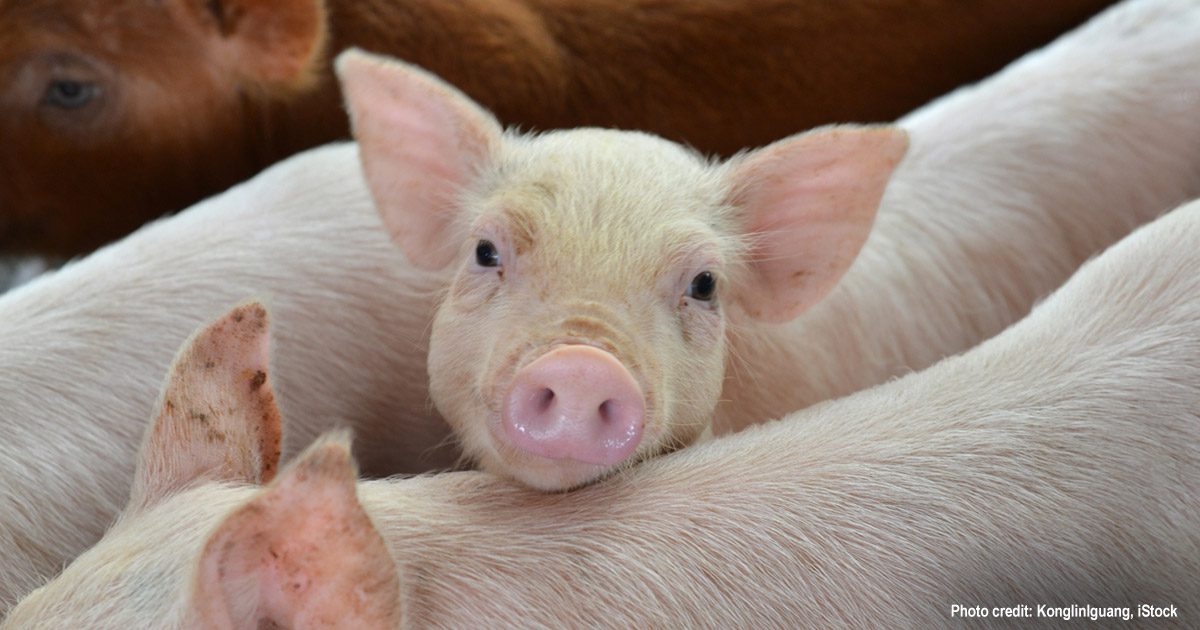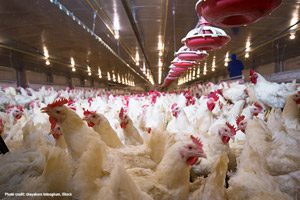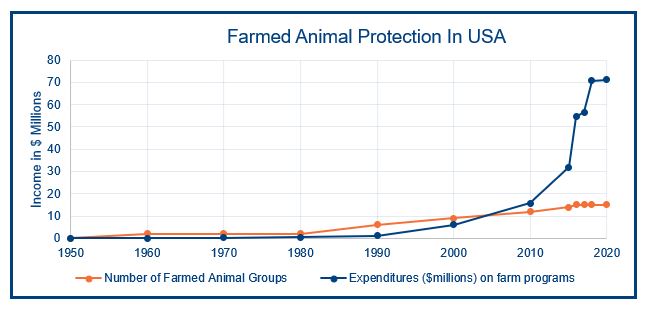
Oct 03, 2022 Advocacy & Funding for Farmed Animal Welfare
 Campaigns focusing on farmed animal welfare are relatively recent events of global animal advocacy, even though the UK animal protection movement is frequently identified as being launched when Richard Martin introduced his Cruel Treatment of Cattle Act in 1822. However, farmed animal advocacy only began following the 1964 publication of Animal Machines, a book by Ruth Harrison. In her book, she describes how farm animals were suffering in new systems of industrialized animal agriculture (dubbed “Factory Farming”) and were mostly viewed as units of production rather than sentient animals. From 1950 to 1990, the movement primarily addressed companion and laboratory animal welfare, even though the Humane Slaughter Act was passed and revised in the US during this period. It should be noted that the first organization to focus specifically on farmed animal welfare was Compassion in World Farming, founded in the UK in 1967, even though campaigning on behalf of farmed animals was not widespread in the animal movement at that time.
Campaigns focusing on farmed animal welfare are relatively recent events of global animal advocacy, even though the UK animal protection movement is frequently identified as being launched when Richard Martin introduced his Cruel Treatment of Cattle Act in 1822. However, farmed animal advocacy only began following the 1964 publication of Animal Machines, a book by Ruth Harrison. In her book, she describes how farm animals were suffering in new systems of industrialized animal agriculture (dubbed “Factory Farming”) and were mostly viewed as units of production rather than sentient animals. From 1950 to 1990, the movement primarily addressed companion and laboratory animal welfare, even though the Humane Slaughter Act was passed and revised in the US during this period. It should be noted that the first organization to focus specifically on farmed animal welfare was Compassion in World Farming, founded in the UK in 1967, even though campaigning on behalf of farmed animals was not widespread in the animal movement at that time.
A simple but effective way to track farmed animal advocacy in the USA is to count the number of organizations explicitly founded to advocate for farmed animals and the income raised by those organizations. Although large and established national groups have also been involved in farmed animal advocacy since the 1980s, it is simpler to track the number of newly established organizations focused on farmed animals and their income. An additional 280 organizations that are farmed animal sanctuaries as of 2020 are not enumerated in the chart below.

The chart demonstrates a dramatic increase in farmed animal advocacy (as tracked by annual income) in the last decade.
There is now a US affinity group of foundations (Farmed Animal Funders) that award grants to support farmed animal advocacy. In 2021, the affinity group released a report that tracked Global Trends in Philanthropy Fighting Factory Farming. The report was based on a survey of organizations around the world that are campaigning against factory farming. Based on the survey results, Farmed Animal Funders estimates that approximately $200 million was spent on farmed animal advocacy globally in 2020. Of that amount, only $37.5 million was spent outside the USA, the UK, or the EU. However, expenditures on farmed animal campaigns continue to increase rapidly. Half the farmed animal advocacy groups were medium-sized organizations with revenues between $100K to $5 million. These medium-sized groups accounted for 50% of all expenditures, while large organizations with incomes of more than $5 million accounted for 45% of total expenditures but only accounted for 3% of all groups. Most of the member foundations in Farmed Animal Funders have only begun supporting farmed animal issues in the last five years. Still, these donors have become essential supporters of growing farmed animal advocacy worldwide.
The report emphasized a significant disconnect between where campaign funding is going and where animals are farmed. While the USA and Europe have large industrialized farmed animal operations, there are extensive industrial animal farming operations in South America (e.g., Brazil and Argentina), China, and several other Asian countries. But advocacy campaigns in Brazil, China, and Asia are very new and not particularly well-funded. The report also identified the types of campaigns. It concluded that there was a focus on institutional and retail buyers of farmed animal products, legislation, public education, and attempts to alter consumer behavior.
While the report identified some areas that required more attention (specifically fish aquaculture and farming of invertebrates), it was optimistic about the overall direction. Indeed, if one tracks the USA situation, farmed animal advocacy has exploded in the last two decades and will probably continue to grow. There have been numerous successes (see recent paper), and there are good prospects for further success. Given the impact of industrial animal agriculture systems, the more progress that can be made to persuade people to eat lower on the food chain, the better for the planet and global sustainability, not to mention benefits for human health and animal well-being.


